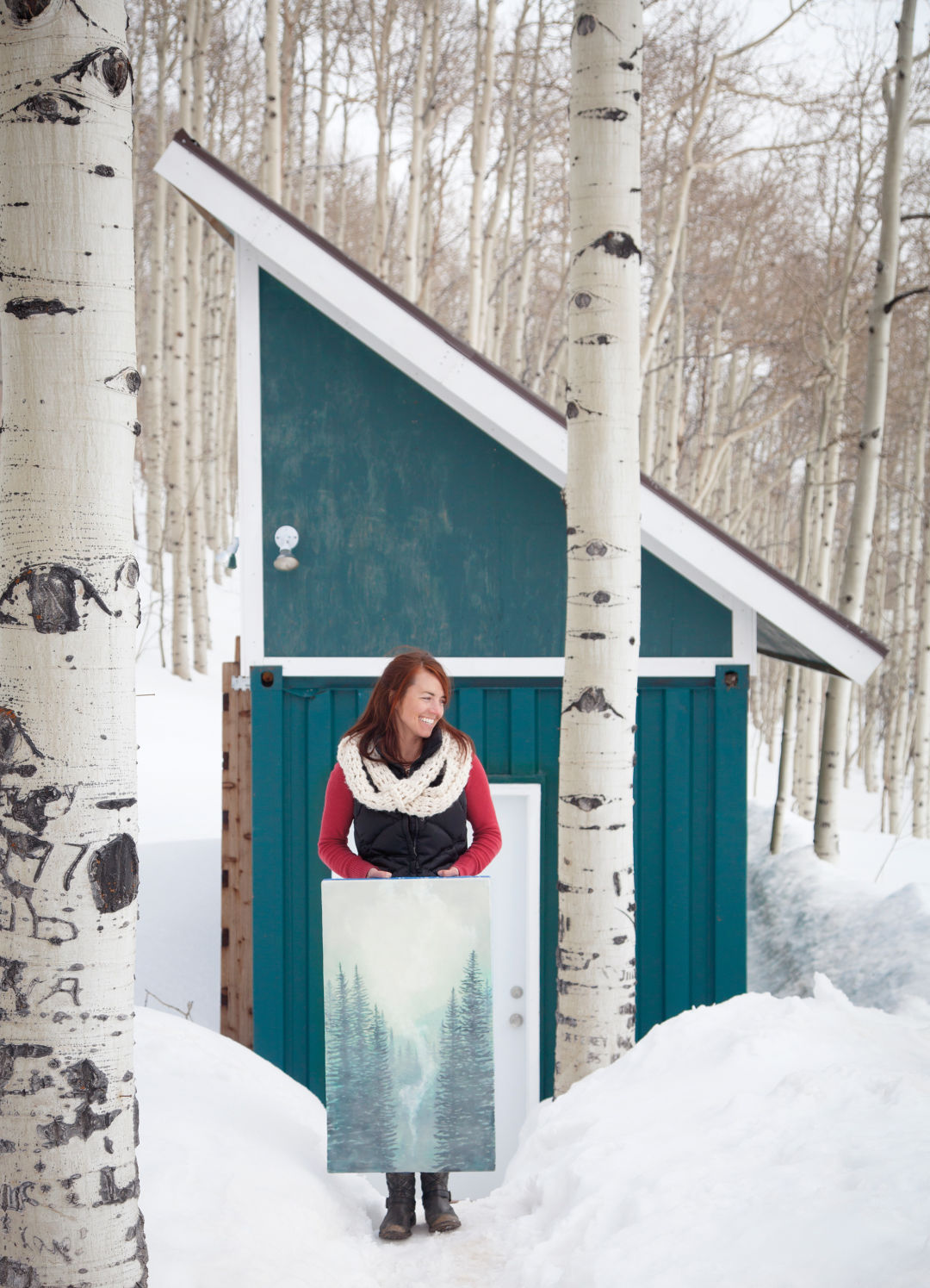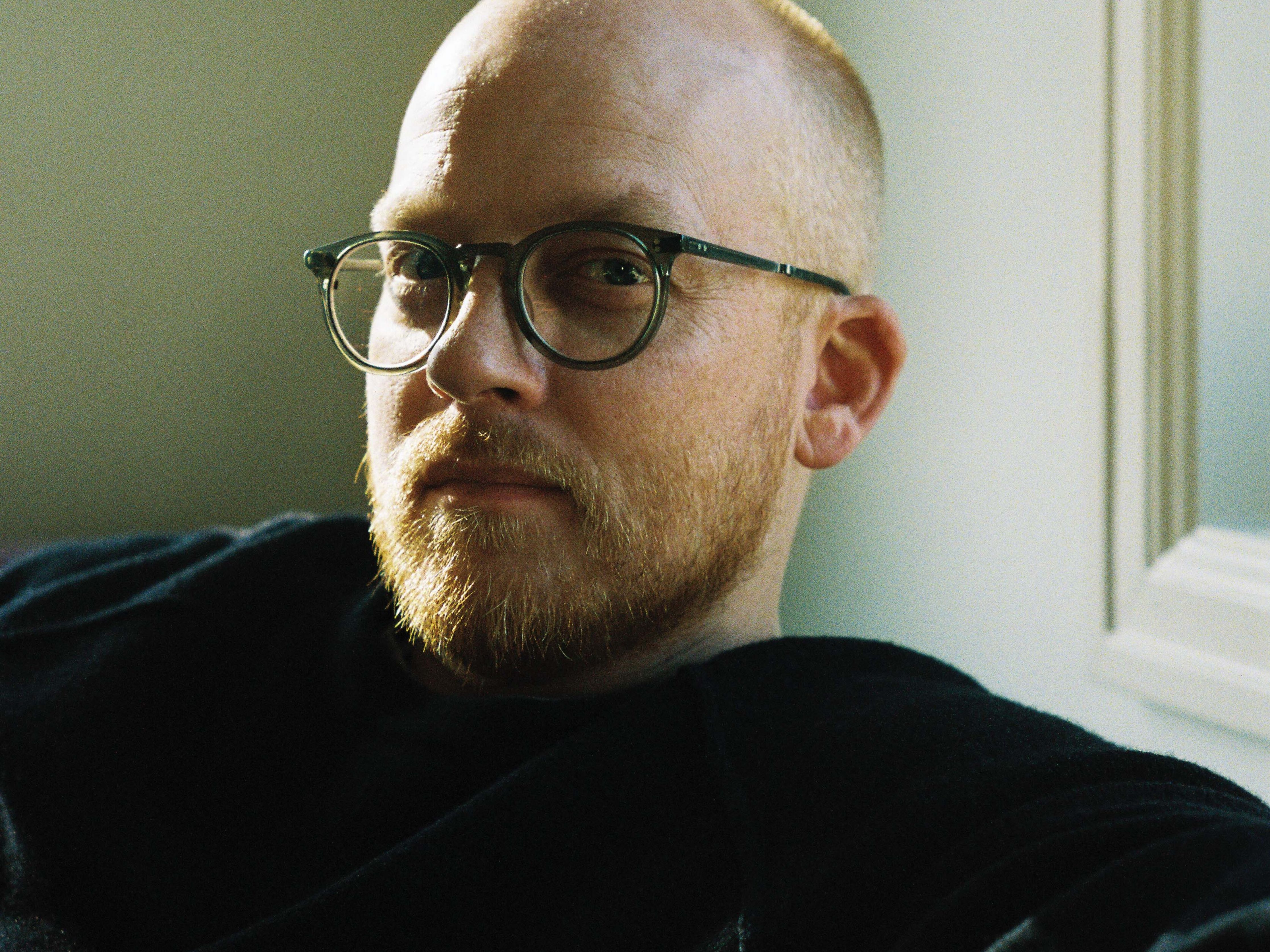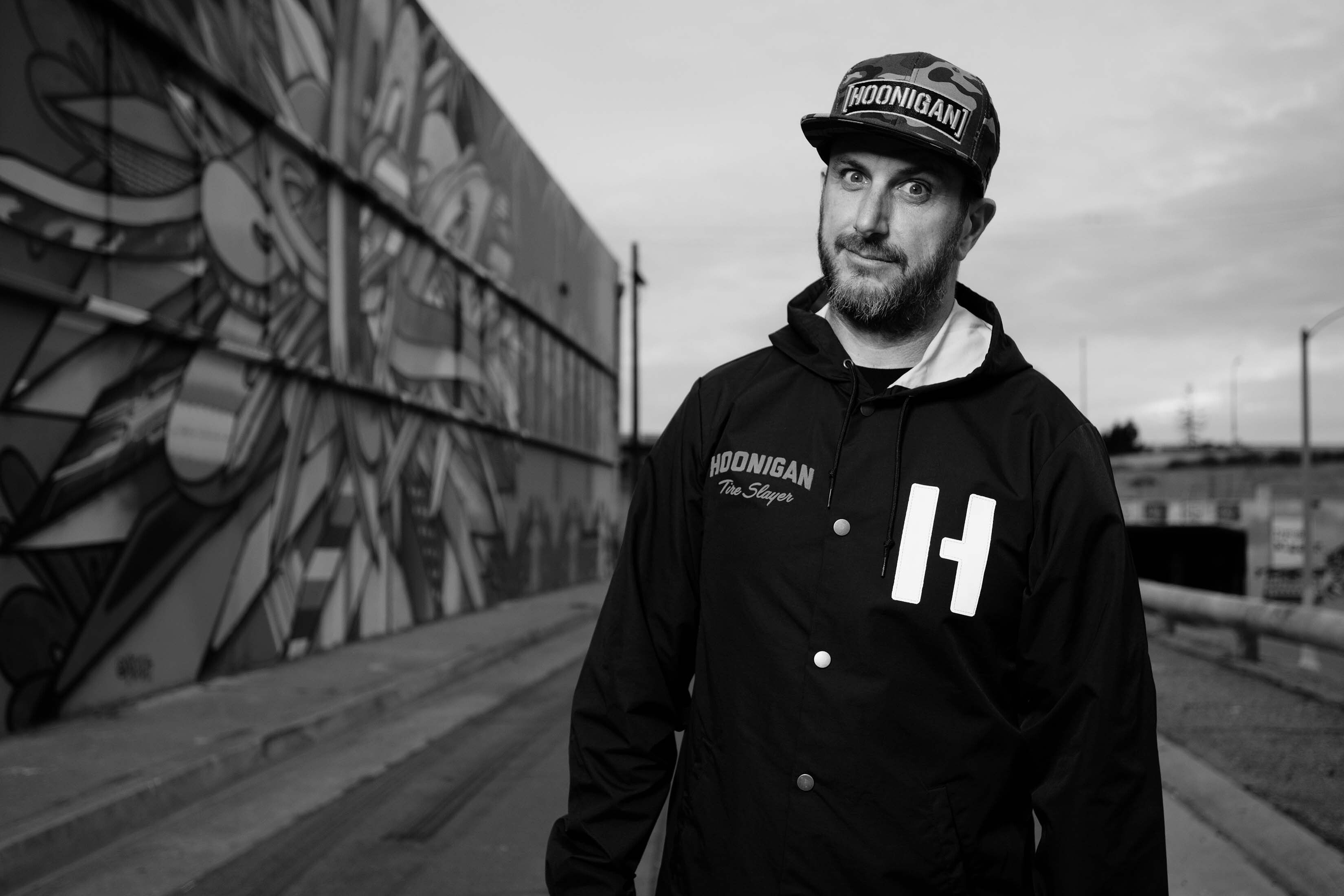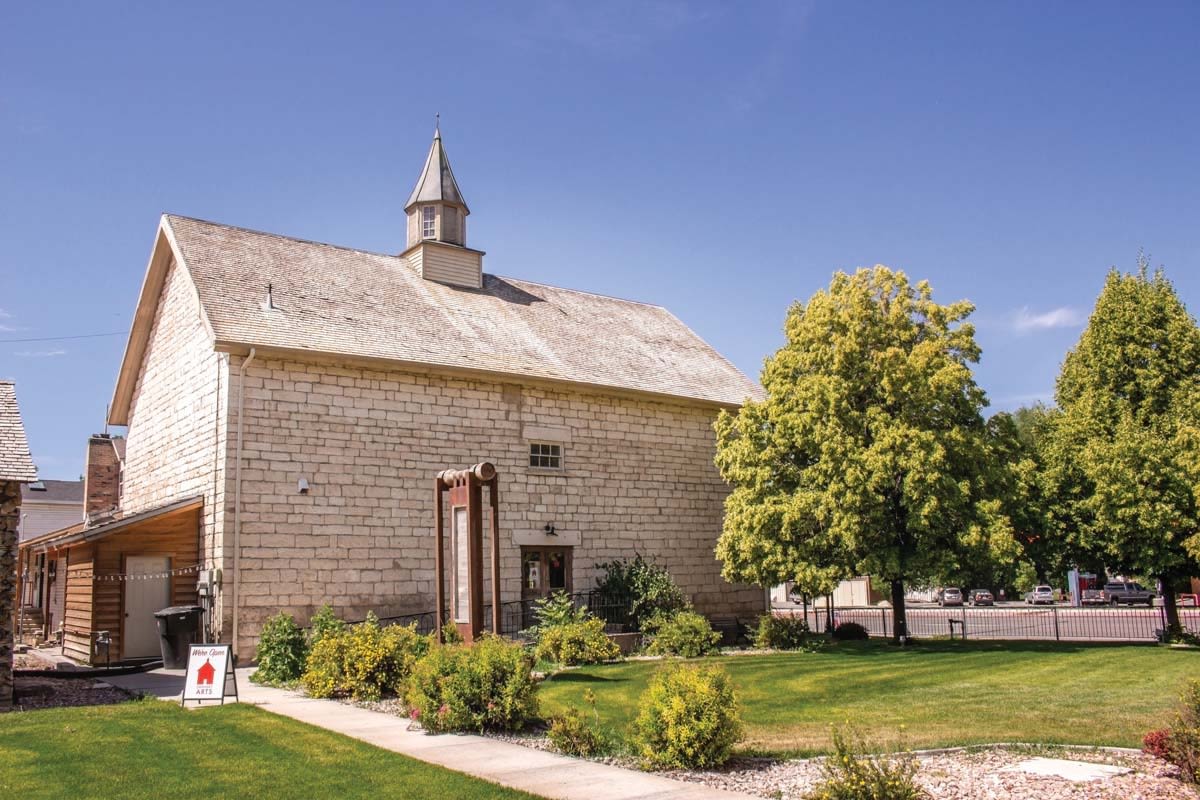A Frozen Moment

Image: Nicole Morgenthau
The clock in Bridgette Meinhold’s up-cycled cargo shipping container studio—tucked high in the mountains above Park City in Bonanza Flats—reads 5:15.
A few tungsten bulbs burn over her worktable, which is covered with bits of wax and flecks of paint. It’s easy to imagine it being 5:15 a.m., when first light burns a tender frost off the tall, wild grasses outside the studio door. Or it could be 5:15 p.m., when an iridescent yellow-orange sun sets over the aspens. What time it is really doesn’t matter—the timepiece’s hands no longer rotate, freezing the room time, in an effect fittingly similar to the artist’s ethereal encaustic landscape paintings.
“It starts with being in nature. Everything I paint is based on being in the elements: hiking in the rain, skiing in a storm, biking on a beautiful day, or watching the weather roll in—everything,” Meinhold explains. “When I paint, I’m trying to create a feeling. It’s almost like being drunk off of it. It’s a little heady, you know. But it’s that kind of feeling.”
A piece like Nebulus (47" x 20", July 2014) invokes a sense of nostalgia and reverence a child might feel in the moment—and later as a memory—as she pauses in play to look at grand pines towering above. Valley Floor (18" x 24," July 2014) is expansive and exploratory, instilling a desire to travel far, perhaps into adulthood. However interpreted, Meinhold’s paintings, of which she produced more than 70 last year alone, are gorgeously rendered. Of course it’s her keen aesthetic, but her encaustic methodology adds to the feeling.
The encaustic technique—which uses beeswax as a painterly method—is thought to have originated with fourth-century-BC Greek shipbuilders, who used the goo to patch cracks. Meinhold asserts that with the invention of electric skillets (to properly melt the wax at a consistent 200 degrees), the artistic method began to popularize, with a surge in the past two decades.
Her physical process is fairly straightforward, although laborious. It begins with her husband, Matt, who builds her frames out of reclaimed wood. She makes her canvases from wood as well; a traditional canvas is too pliable, which could allow the cooled wax to crack. The frame is taped, and Meinhold applies the first coat of hot wax, which is torched and scraped and left to cool. From there, she begins to build the sky with colored pigment sticks and adds more wax and old-fashioned milk paint. She applies sometimes up to six layers, each one adding dimension, before working in the final coat of wax.
An Oklahoma native who didn’t experience nature until later in life, Meinhold adores the outdoors, which is apparent in her final products. “It’s so critical and so much a part of me, I want to experience it all the time,” she says.
Being in the environment and environmentalism are intertwined for Meinhold, who is also a freelance writer. She published her first book, Urgent Architecture: 40 Sustainable Housing Solutions for a Changing World (W.W. Norton & Company), in 2013, exploring principles she and Matt live out in their remote home. (It’s so remote, in fact, that Meinhold’s paintings must be snowmobiled out in the winter.)
Whether the studio clock is a metaphor for Meinhold’s slice-in-time paintings or simply a way to detach herself from life’s distractions, the result is a transcendental glimpse of the serene gift called nature.




































